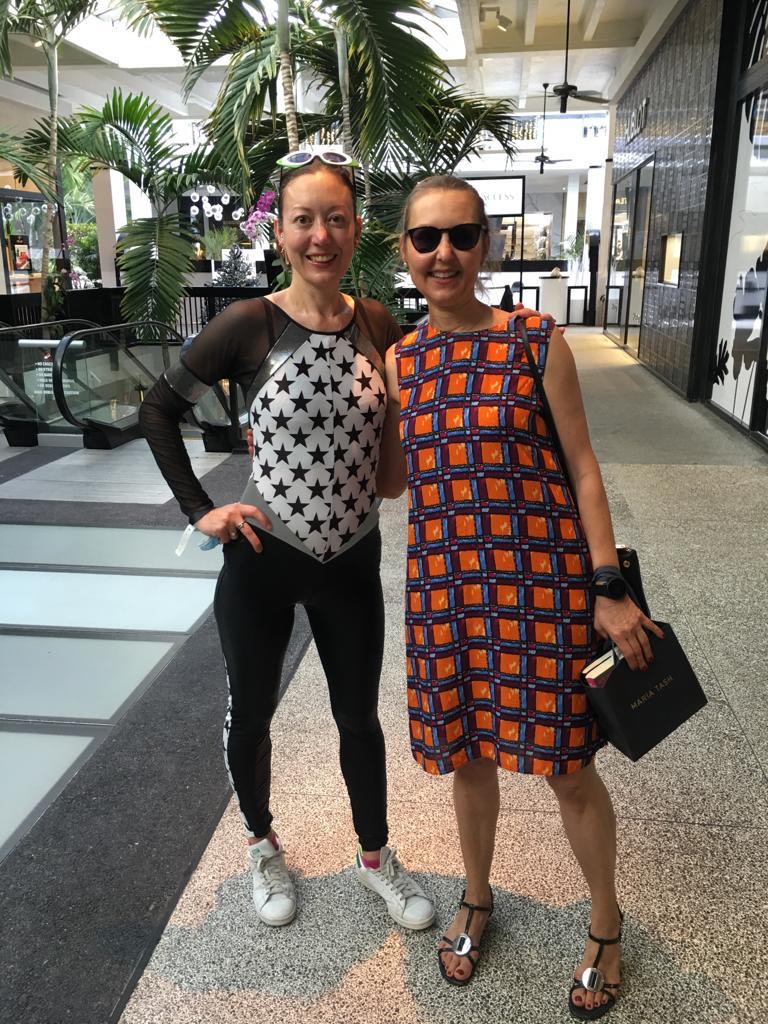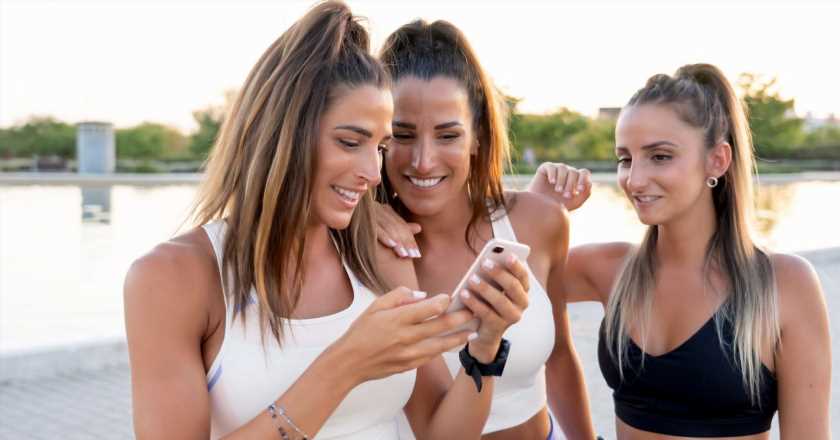“Seeing my older sister become a runner inspired me to start jogging in my late 30s”
Our siblings can influence the way we exercise, whether it’s introducing us to a new type of workout or helping us reach our athletic goals. Writer Jennifer Barton has always been resistant to running, but hearing her older sister’s passion for the activity was all it took to dust off those trainers.
While fitness is a core part of my life, I am definitely not a runner. Other than a brief spell while training for a 5k in 2014 (for work, not pleasure), I’ve never felt compelled to start running – partly thanks to having genuinely bad knees (first tendonitis, then a torn meniscus that required surgery).
At least that was until last month, when a voice in my head unexpectedly started urging me to go for a jog. During the Christmas holidays, I was reunited with my older half-sister, Katrin, who lives in a different country.
You may also like
RED month: “I’m an avid marathon runner but trying to run every day was the most boring thing I’ve ever done”
Katrin has been a runner for years, but a newish Garmin fitness watch motivated her to take the hobby more seriously. She was telling me about her training schedule, how she’s been pushing herself to go faster and further and was feeling more motivated and stronger than ever. Her enthusiasm for running was infectious.
My subconscious must have been all ears, because the next morning, I found a playlist, untangled my headphones and went for my first run in nearly a decade. Phone in hand, I pushed myself out of the door for a 20 minute jog.
It was glorious. I felt more alive than I had in years. It was also perplexing; clearly, I’d convinced myself that I hated running, but was this sudden change about the exercise itself, or did it have something to do with an extra sense of connection to my sister?
It’s worth explaining that our relationship is complicated. Katrin and I may feel like best friends… but we’re also near-perfect strangers. Our bizarre family circumstances meant that we didn’t meet until I was in my early 30s; Katrin in her 40s.
Our IRL time together feels precious. It’s an overwhelm of emotion as we try to catch up on memories we never shared, and create lasting new ones for the future.
How fitness can unite siblings
There is a lot of love between us as sisters, but our unique circumstances mean there’s a lot of pain too. Some subject matters are off-limits. Exercise is neutral territory, so it’s a good thing we both happen to love it.
While I’ve not been a runner up to now, I am heavily involved in fitness and, as such, get a real buzz in passing any titbits of knowledge to my big sis – it’s not always her teaching me. In fact, during our recent reunion, Katrin was asking me lots of yoga-related questions. She’d got really into it after we’d attended some classes together a few years ago, and one evening, she pulled me aside, gave me a hug, and whispered: “Yoga was the best gift you could have ever given me.”
I’m not the only little sis taking my older sibling in new fitness directions. Lisa Miller credits her younger sister Emily – “my big-little sister and absolute go-to” – with introducing her to a host of fitness adventures, like a Tribe 5k Maverick race (even though Lisa insists she isn’t a runner) and freezing December swims in Cornish sea pools.
“Her doing things always makes me want to try them,” Miller says. “We motivate each other. And there’s no competition but we want to do it together because it’s more fun.”

The two bravely set off on a stand-up paddleboard adventure around Burgh Island in Devon last year, which Miller doesn’t think she’d ever have considered doing on her own or with anyone else – even her husband. The energy would feel different; the lighthearted silliness would turn competitive.
“We would have ended up arguing, with me having a hissy fit and him storming off and paddling off without me. Whereas Em and I always look out for each other with things like that. We were really proud of ourselves. We just end up laughing, doing a tummy workout by having hysterics.”
Exercise as a bonding experience works just as well for siblings who aren’t necessarily the best of friends. BLOK London’s head of movement Lotti Maddox describes her relationship with older sister Lauren as “chalk and cheese in almost every respect”. As adults, they discovered Kayla Itsines’ workouts before Maddox became a trainer herself.
“We used it as a way to check in with each other’s progress and hold each other accountable,” says Maddox, who has since trained her older sister ahead of her wedding and through two pregnancies. The experience “really brought us closer together”, she says.
Siblings and sport: accountability, support and motivation
For some siblings, fitness is more than a fun hobby. It’s a profession. Extensive scientific research has been carried out on siblings in sport, covering a range of topics like how a sibling relationship impacts a person’s decision to focus on a specific sport, or how positive role modelling can promote prolonged engagement within a sport.
With their combined 30 Grand Slam singles titles, the Williams sisters are often held up as the prime example of sibling love triumphing over rivalry. Team GB sent eight sibling pairs to the Tokyo 2020 Olympics, a record-breaking number, across various sports including gymnastics, athletics and boxing.
Where you fall in the sibling chain can determine your chances of athletic success. This theme is explored in the book The Best: How Elite Athletes Are Made by Tim Wigmore and sports scientist Professor Mark Williams, which examines data from various studies that show younger siblings have a statistically higher chance of becoming elite athletes, whether you’re playing women’s football, baseball, tennis or any other sport (this is consistent regardless of the sibling’s gender).
“Generally the older siblings are bigger, stronger, more physically developed, more emotionally developed, so it presents a stimulating challenge for the younger sibling to try and compete against the older sibling, which potentially provides more of a stimulus for learning and development,” co-author Professor Williams tells Stylist.
Other factors are also at play, according to Williams. Younger siblings are exposed to sports from an earlier age, they benefit from parents’ more relaxed attitudes and they pick up psychological skills including motivation, mental resilience and learning to deal with failure, by watching and competing with older siblings.
Twin sisters Kristina and Sadé Alleyne, founders of contemporary dance company Alleyne Dance, have taken a collaborative rather than combative approach to competitive athletics and, later, dance. They would divide up athletics events based on who was more likely to perform better in a certain race. Using the same logic, they’d decide who should audition for a particular dance company.
You may also like
Dancing fitness: why you’re never too old to dance and reap all of the benefits
“We didn’t see many people that look like us in terms of our bodies, skin colour and physicality, so we had to be each other’s coaches. We thought: ‘We’re gonna have to pave our way ourselves,’” Kristina says, noting how the sisters motivated each other through exercise and nutrition when they decided to pursue dance professionally. The twins started daily strength and flexibility workouts, which Kristina calls their “ritual”.
“I think it’s important to have something that stays the same because each day is slightly different. My heart is pumping and I feel alive. My sister motivates me, so it’s nice to do it hearing my sister’s voice,” she says.
I think I understand what she means. Katrin and I are both back at our respective homes, but every time I go for a run, I can almost see her smile.
I’m still enjoying that running feeling: the freedom, the brisk air, the strength in my body I didn’t know I possessed. But I think what I love most of all is how, no matter where we are in the world, when I run now, I feel connected to the sister I adore.
For more first-person fitness stories, visit the Strong Women Training Club.
Images: Getty/author’s own
Source: Read Full Article
